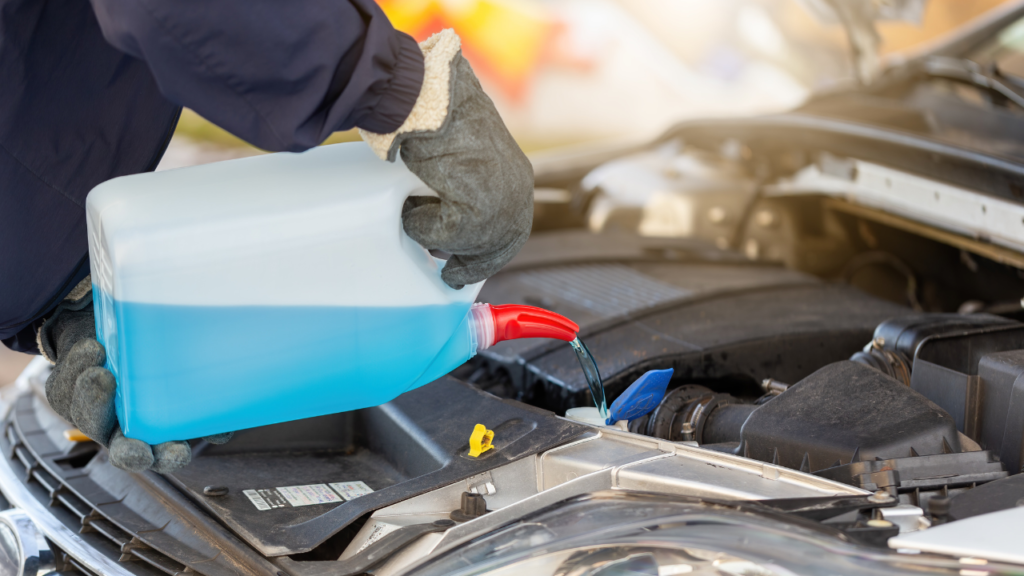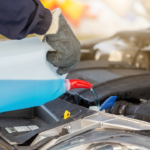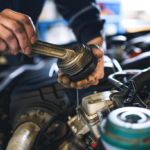Understanding car fluids empowers you to maintain your vehicle’s importance. You’ll find that regular checks and proper refills of essential fluids like motor oil, coolant, and brake fluid are essential for your car’s performance and longevity. By mastering these basic maintenance tasks, you’re not only preventing costly repairs but also ensuring your safety on the road. However, fluid maintenance is more than just topping off reservoirs—it’s about knowing the right types, tools, and techniques. There’s a wealth of knowledge to investigate that can transform you from a novice to a confident car owner.
Key Takeaways
- Regularly check and maintain essential fluids: motor oil, coolant, transmission fluid, brake fluid, and power steering fluid.
- Use the correct fluid types as specified in your vehicle’s owner’s manual to prevent damage and ensure optimal performance.
- Locate fluid reservoirs using your owner’s manual and check levels monthly or before long trips.
- Follow proper refilling techniques, including using a clean funnel and adding fluid slowly to avoid overfilling.
- Look for signs of fluid problems, such as dashboard warning lights, unusual noises, or changes in vehicle performance.
Table of Contents
Understanding Essential Car Fluids
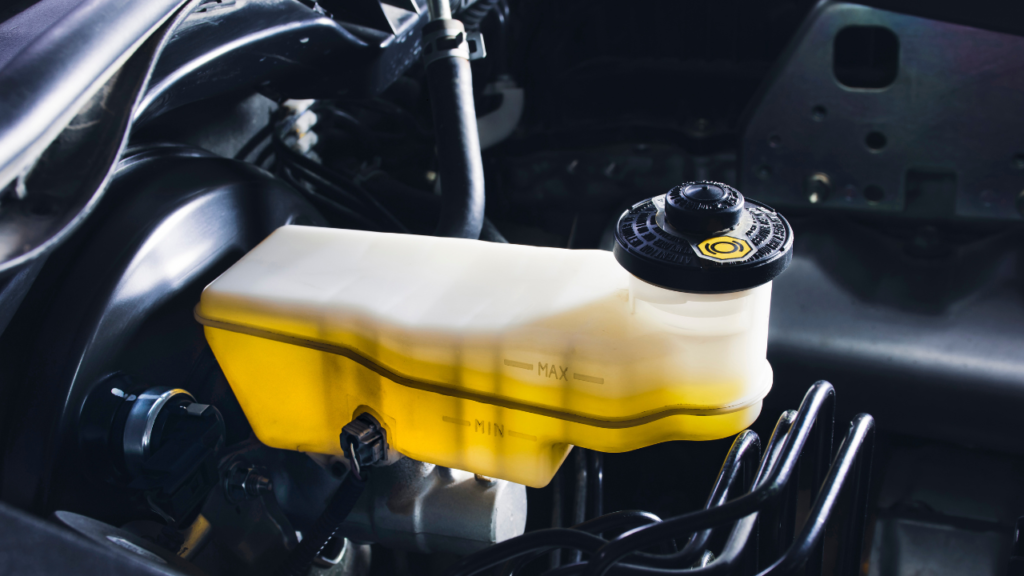
Car fluids are the lifeblood of your vehicle, each serving a significant function in its operation and longevity. Understanding these essential fluids is fundamental for maintaining your car’s health and performance.
Motor oil is perhaps the most important fluid, lubricating engine components and reducing friction. It prevents overheating and should be checked regularly for level and condition to avoid engine damage.
Coolant, also known as antifreeze, is similarly significant. It regulates engine temperature, preventing overheating and freezing. You should check coolant levels every 50,000 miles when the engine is cool.
Transmission fluid guarantees smooth gear shifts by lubricating and cooling transmission components. Monitor its color and smell; dark or burnt fluid indicates it’s time for a replacement.
Brake fluid is essential for safe braking, transmitting force from the pedal to the braking system. Confirm it’s clear and at the proper level, as low levels may indicate leaks.
Lastly, power steering fluid facilitates easy steering. Check it regularly, as low levels can lead to steering difficulties. Always use the correct fluid type to prevent system damage.
Tools for Fluid Maintenance
Proper equipment is essential for effective fluid maintenance, guaranteeing you can accurately check, measure, and refill your vehicle’s necessary fluids.
To start, you’ll need a clean rag or paper towel for wiping dipsticks and checking fluid levels. This helps prevent contamination and guarantees accurate readings. A funnel is indispensable for adding fluids without spills, protecting both you and your vehicle’s components.
Your car’s owner’s manual is a significant tool, providing specific information on fluid types, capacities, and reservoir locations. Keep it handy during maintenance tasks. For safety, wear safety goggles when handling hydraulic fluids to protect your eyes from potential splashes.
A tire pressure gauge, while not directly related to fluids, is fundamental for maintaining proper tire inflation, which affects your vehicle’s overall performance and safety.
Locating Fluid Reservoirs
Identifying the correct locations of your vehicle’s fluid reservoirs is vital for efficient maintenance and accurate fluid level checks. Most fluid reservoirs are clearly labeled with symbols indicating their function, making them easier to locate. However, it’s always best to consult your owner’s manual for specific details about your car model.
Here are four key fluid reservoirs you’ll need to locate:
- Engine oil reservoir: Usually near the front of the engine, with a dipstick for level checks.
- Coolant reservoir: Typically a translucent plastic container near the radiator.
- Brake fluid reservoir: Often a small, opaque container near the back of the engine compartment.
- Transmission fluid reservoir: Location varies by model, sometimes accessed via dipstick tube.
The engine oil reservoir is essential for maintaining your car’s performance. You’ll find the dipstick nearby, which you’ll use to check oil levels.
The coolant reservoir is easily identifiable by its translucent appearance, allowing you to see the fluid level between minimum and maximum marks.
The brake fluid reservoir is usually attached to the brake master cylinder.
For the transmission fluid reservoir, you’ll need to refer to your owner’s manual, as its location can vary greatly between different car models.
Checking Fluid Levels
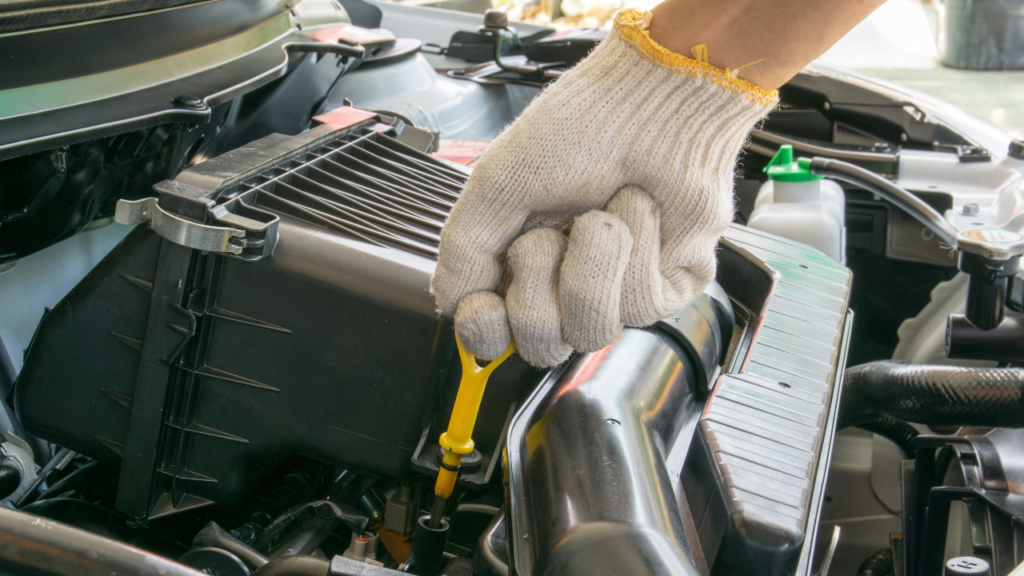
Once you’ve located your vehicle’s fluid reservoirs, it’s time to accurately check the levels of each essential fluid to verify ideal performance and safety.
Start by checking your engine oil using the dipstick. Pull it out, wipe it clean, reinsert it fully, then remove it again to read the oil level. Confirm it’s between the minimum and maximum marks.
For coolant level, wait until the engine is cool, then check the reservoir. The fluid should be between the minimum and maximum indicators. Don’t open the cap when the engine’s hot, as pressurized coolant can cause severe burns.
To check the brake fluid level, locate the reservoir and observe the fluid level through the translucent container. It should be between the minimum and maximum marks. If it’s low or the fluid appears dark or cloudy, it may need replacement.
For power steering fluid, check the level against the reservoir markings. If it’s low, top it off to confirm smooth steering operation.
Remember to check these essential fluids at least monthly. Regular maintenance of fluid levels can prevent costly repairs and confirm your vehicle runs efficiently and safely.
Proper Refilling Techniques
Refilling your car’s fluids requires precision and care to maintain ideal vehicle performance and prevent potential damage.
Before you begin, verify your engine is cool to avoid burns and inaccurate level readings. Always consult your vehicle’s manual for specific fluid types and capacities to confirm compatibility.
When you’re ready to refill, follow these steps:
- Locate the appropriate reservoir for the fluid you’re adding.
- Use a clean funnel to prevent spills and guarantee a precise pour.
- Add the fluid slowly, checking the level frequently to avoid overfilling.
- Securely close the cap after refilling and check for any leaks around the reservoir.
Remember to dispose of old or excess fluids properly, following local regulations to protect the environment.
As you refill, be mindful of the fluid’s color and consistency. If you notice any unusual changes, it may indicate a problem that requires professional attention.
Regular fluid checks and proper refilling techniques are essential for your vehicle’s longevity. By maintaining ideal fluid levels, you’ll confirm your car operates efficiently and safely.
If you’re ever unsure about a particular fluid or refilling process, don’t hesitate to consult a professional mechanic.
Recommended Fluid Types
After mastering proper refilling techniques, you’ll need to understand the specific types of fluids your vehicle requires to maintain ideal performance and prevent potential damage. Each fluid serves a unique purpose, and using the correct type is vital.
For engine oil, consult your owner’s manual for the recommended viscosity range, typically between 5W-30 and 10W-40. This guarantees proper lubrication and engine protection.
In relation to coolant, you’ll most likely use an ethylene glycol-based antifreeze, but always follow your vehicle’s specifications to avoid engine damage.
Transmission fluid is usually red or amber in color. It’s important to use the correct type as specified by your vehicle manufacturer, as different transmissions have varying requirements.
For brake fluid, you’ll need to meet DOT standards. Common types include DOT 3, DOT 4, and DOT 5.1, depending on your vehicle’s braking system.
Lastly, power steering fluid can vary between vehicles. Some use automatic transmission fluid, while others require a specific power steering fluid. Always check your owner’s manual to confirm you’re using the correct type for your car’s steering system.
Maintenance Schedule
A well-structured maintenance schedule is crucial for keeping your vehicle’s fluids at excellent levels and guaranteeing its longevity. To maintain peak performance and prevent engine damage, you should check your car’s fluid levels regularly.
Here’s a recommended schedule for fluid maintenance and repair:
- Engine oil: Check monthly and before long trips
- Coolant: Inspect every 50,000 miles
- Brake fluid: Examine monthly
- Power steering and transmission fluid: Review every 4-6 months
Adhering to this schedule helps you catch potential issues early and avoid costly repairs. Remember to perform a thorough fluid check every 5,000-10,000 miles or every 4-6 months, whichever comes first. This practice not only maintains your vehicle’s performance but also preserves your warranty coverage.
When checking coolant levels, always confirm the engine is cool to prevent burns. If you’re unsure about any aspect of fluid maintenance, consult your vehicle’s manual or seek advice from a professional mechanic.
Signs of Fluid Problems
To effectively maintain your vehicle, you’ll need to recognize key indicators of fluid-related issues, which can manifest through various symptoms and warning signs.
Your car’s dashboard is often the first line of defense, as low fluid levels can trigger warning lights, signaling the need for immediate inspection and potential refilling.
Pay attention to unusual noises coming from your engine, such as grinding or knocking sounds. These may indicate oil-related problems, emphasizing the importance of checking your engine oil levels and condition regularly.
If you notice your engine overheating, it’s likely a coolant issue. Promptly check coolant levels and inspect the system for potential leaks.
Your braking system can also provide clues. If you experience difficulty braking or a spongy brake pedal feel, it may point to low brake fluid levels. This can compromise your vehicle’s safety and performance, so don’t delay in addressing these symptoms.
Likewise, stiff or unresponsive steering could signal low power steering fluid levels. To guarantee ease of maneuverability, check and refill this fluid as needed.
What to do when you have a car fluid problem
When you’ve identified signs of a car fluid problem, swift action is key to prevent potential damage and secure your vehicle’s continued performance and safety.
Here’s what you should do:
- Identify the specific fluid issue: Determine which car fluid is causing the problem based on the symptoms you’ve observed.
- Check the fluid level: Use the appropriate method to check the oil, coolant, or other affected fluid. If levels are low, top off with the correct type of fluid.
- Inspect for leaks: Examine the area around the fluid reservoir and under your vehicle for signs of leakage.
- Assess fluid quality: Look for changes in color, consistency, or smell that might indicate contamination or degradation.
If you’re unsure about the cause or severity of the fluid issue, it’s best to consult a professional mechanic.
They can accurately diagnose the problem and recommend the appropriate solution.
For minor issues, such as slightly low levels, you can often resolve them by adding the correct fluid.
However, if you notice significant fluid loss, unusual color changes, or persistent problems, it’s essential to have your vehicle inspected by a qualified technician to prevent more serious damage and guarantee your safety on the road.
Frequently Asked Questions
Which 7 Fluids in Your Car Need to Be Checked Regularly?
Did you know 86% of car breakdowns are preventable? You’ll need to regularly check these seven fluids: engine oil, coolant, brake fluid, transmission fluid, power steering fluid, windshield washer fluid, and fuel. Don’t neglect this vital maintenance.
What Fluids Should I Check My Car Regularly?
You should regularly check your car’s engine oil, coolant, brake fluid, power steering fluid, and windshield washer fluid. Don’t forget to inspect transmission fluid and differential oil if applicable. Always follow your vehicle’s maintenance schedule for peak performance.
What Should You Check Your Vehicle’s Fluid Levels?
You’d be a car superhero if you checked these fluids regularly: engine oil, coolant, brake fluid, power steering fluid, and windshield washer fluid. Check them when the engine’s cool, using the dipstick or reservoir indicators for accurate readings.
How to Check Your Car Fluid Levels?
To check your car’s fluid levels, you’ll need to locate the reservoirs. Use dipsticks for oil and transmission fluid, and inspect coolant, brake, and power steering fluid levels visually. Always check when the engine’s cool for accurate results.
